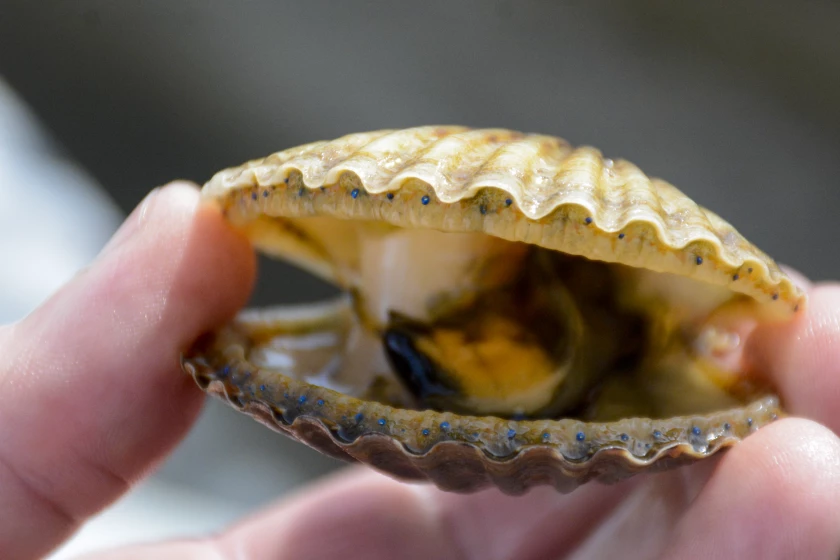Peconic Bay scallop die-offs are ‘a cautionary tale’ for New England

J.D. Allen / WSHU
Once one of the largest fisheries on the East Coast, Peconic Bay scallops have faced near complete die-offs on Long Island since 2019.
A study by Stony Brook University shows this could be a cautionary tale for New England.
Christopher Gobler, a co-author and endowed chair of coastal ecology and conservation in the School of Marine and Atmospheric Sciences, used satellite thermal imaging and recorded scallop heartbeats to measure the stress less oxygen and warming waters have on shellfish populations.
Data shows over the past two decades, the Peconic Bay estuary — and the entire Northeast — are warming at rates during summer that far exceed global average; Gobler said, “about threefold higher.”
“We found that when placed in areas that were experiencing heatwaves, all the scallops died, whereas the ones that were in cooler temperatures, they survived,” he said.
The focus of the study was on extreme summer temperatures, becoming more frequent due to climate change, which have made bay scallops more vulnerable to environmental stress. The heartbeat response of bay scallops were measured using optical infrared sensors, or “scallop fitbits.”
According to satellite imagery and long-term environmental records, the temperature of New England waters has increased faster than any other place in the U.S., and will soon approach Long Island’s current conditions.
The only commercial U.S. fishery of the same species of northern bay scallop, which has already vanished in waters south of New York, is found in Massachusetts. Gobler noted his research, published in Global Change Biology, suggests the scallops may go the way of the lobster.
“The Long Island lobster: Well, look what happened there,” Gobler said. “It got too warm in Long Island Sound, and that population crashed. But then it thrived further north, in Maine. But now people say that maybe it’s even getting too warm up there.”
“In climate change, there are winners and losers. And so that can be said with regards to organisms, but actually can be said with regards to things, like fisheries and states,” he continued. “New York became a climate change loser, whereas places in the north are hanging in there. But, if the trends continue, then we would expect that those organisms may continue to move north.”
Northern bay scallops can be found as far north as Canada.
The authors warn that while mobile fish can respond by moving to waters with more tolerable temperatures, shellfish, which rely on dispersing spawn to migrate, may be forced to cope with extreme heat. Marine biologist Stephen Tomasetti, a co-author, said this could result in more mass mortality events, impacting commercial economies.
“Commercial shellfisheries are a vital part of our blue economy, and shellfish habitats are changing rapidly,” Tomasetti said in a statement. He points to other examples of “heat-induced mass mortality” on the East Coast, including lobsters in Long Island Sound and blue mussels in Delaware.
Gobler recognized other factors impacting the scallops, including new predators and parasites that have become more prevalent because of warming waters, and the oversaturation of nitrogen in the water, due to wastewater pollution and stormwater runoff, which creates algal blooms that zap oxygen from the water, suffocating scallops.
This reduction of oxygen also creates water conditions that are too acidic for the scallops. Warmer water also holds less oxygen. “It all, sort of, points to the idea that these scallops are, you know, more commonly encountering temperatures that are not permissive for their survival,” he said.
This story was originally published by WSHU, a partner of the New England News Collaborative.
